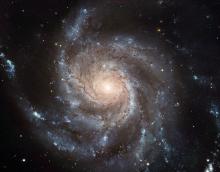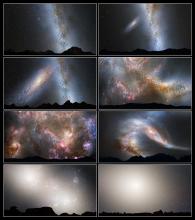Listen to today's episode of StarDate on the web the same day it airs in high-quality streaming audio without any extra ads or announcements. Choose a $8 one-month pass, or listen every day for a year for just $30.
You are here
Blue Snowball
Andromeda is best known for a single object — the Andromeda galaxy, M31. But that’s not the constellation’s only good “deep-sky” object. One of them is inside our own galaxy: a dying star known as the Blue Snowball Nebula.
Even though it’s much closer than the Andromeda galaxy, the Snowball is still a good jaunt from Earth — about 4,000 light-years. It’s a bubble of gas and dust expelled by a dying star.
The star’s nuclear reactor — its hot core — is switching off. The core is blowing away the star’s outer layers. That bubble spans about a quarter of a light-year, and it’s expanding at about 60,000 miles per hour. The gas is “energized” by ultraviolet light from the core, causing it to glow. Seen through a telescope, the object looks like a blue snowball.
With the outer layers barreling away from it, the core is exposed to view. It’s tiny — only about one-tenth the diameter of the Sun. But it’s much, much hotter than the surface of the Sun, so it shines more than a thousand times brighter.
Before long, though, the core’s nuclear fire will be extinguished. The core will continue to shine, but at a tiny fraction of the Sun’s brilliance. Without a strong energy source to light it up, the blue snowball will melt away.
Andromeda is low in the east and northeast as night falls. The nebula is at the right edge of the constellation, not far above the Great Square of Pegasus.
We’ll have more about Andromeda tomorrow.
Script by Damond Benningfield






